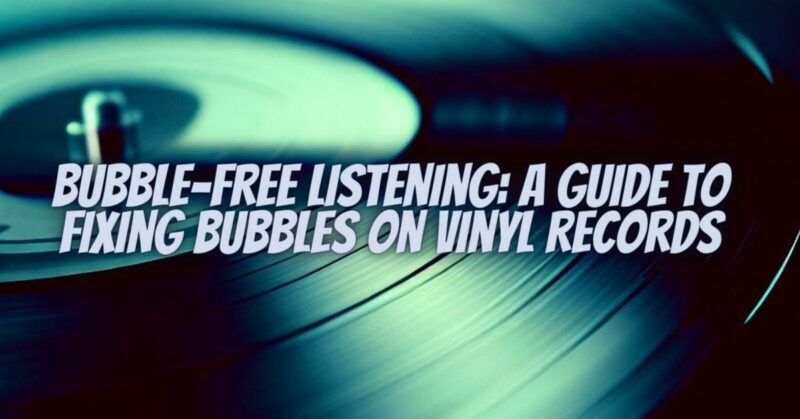Vinyl records have made a triumphant resurgence in the world of music, drawing enthusiasts back to the analog allure of physical media. Yet, the presence of bubbles on vinyl records can disrupt the otherwise smooth listening experience. In this comprehensive guide, we will delve into the issue of bubbles on vinyl records, examine the factors behind their formation, and provide practical steps to rescue your cherished collection and ensure a bubble-free listening journey.
The Resurgence of Vinyl Records
Before we dive into the intricacies of addressing vinyl record bubbles, it’s essential to understand why vinyl records have regained their popularity:
- Analog Warmth: Vinyl records are celebrated for their analog warmth, delivering a depth and richness to music that digital formats often struggle to replicate.
- Tangible Connection: Handling and playing vinyl records create a tactile and immersive connection to the music, enhancing the listening experience.
- Collector’s Passion: Vinyl records have evolved into cherished collectibles, with enthusiasts actively seeking rare pressings, unique cover art, and records in pristine condition.
Understanding Bubbles on Vinyl Records
Bubbles on vinyl records manifest as raised spots or irregularities on the record’s surface, causing unwanted pops, clicks, and potential damage during playback. To tackle this issue effectively, it’s crucial to comprehend the reasons behind bubble formation.
Common Causes of Bubbles on Vinyl Records
Several factors contribute to the formation of bubbles on vinyl records:
- Pressing Process: During the vinyl pressing process, air can become trapped within the vinyl material as it cools and solidifies, leading to bubble formation.
- Storage Conditions: Poor storage conditions, such as exposure to high temperatures or humidity, can exacerbate the issue, causing bubbles to develop over time.
- Vinyl Quality: Lower-quality vinyl or records exposed to extreme conditions are more susceptible to bubble formation.
Rescuing Your Vinyl Collection
To restore your vinyl records to their pristine condition and ensure a bubble-free listening experience, consider the following steps:
- Preventive Storage: Store your vinyl records in a cool, dry, and stable environment to prevent existing bubbles from worsening and deter new ones from forming.
- Cleanliness: Maintain the cleanliness of your records, keeping them free from dust and debris to minimize surface imperfections.
- Gentle Handling: Handle your records with care, avoiding excessive pressure or exposure to extreme temperatures that can exacerbate bubble issues.
- Bubble Flattening: For minor surface bubbles, attempt gentle flattening by pressing down on the affected area with a soft, lint-free cloth or your finger. Exercise caution to avoid applying excessive force.
- Professional Restoration: In cases of severe or extensive bubble problems, it may be prudent to consult a professional vinyl record restoration service specializing in repairing and flattening records.
Bubbles on vinyl records need not be an obstacle to your listening enjoyment. By comprehending the causes of bubble formation and implementing preventive measures, you can protect your vinyl collection and ensure a smoother listening experience. For existing bubbles, careful handling and surface flattening techniques can help rescue your records from unwanted pops and clicks.
Whether you’re an ardent collector, a casual listener, or a vinyl enthusiast, preserving the condition of your vinyl records ensures that your analog journey remains uninterrupted. You can continue to savor every note and groove without the distraction of bubbles. In mastering the art of bubble-free listening, you’ll unlock the full potential of your cherished vinyl collection and enjoy the analog warmth and charm that vinyl records offer, unmarred by imperfections.


